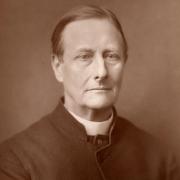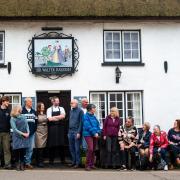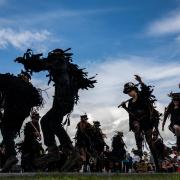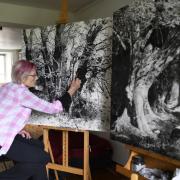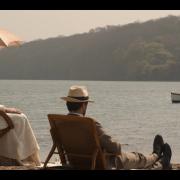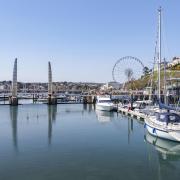Martin Staniforth, I Iearn, is a man who does everything on a grand scale.
The house in East Devon that he shares with his family is architecturally spectacular and filled with more art than most galleries can boast. In the dining room I admire a grid of 12 comically surreal drawings that he bought whilst backpacking in South America; in the hallway is a gorgeous carved wooden allegory from the Far East, and the huge turned staircase is decorated with hundreds of photographs of crazy street signage from around the globe. I take all this as evidence of an intensely creative mind.
Martin begins our formal tour, oddly, in the downstairs bathroom, which turns out to be just another stylish space filled with art. He shows me nine exquisite little sculptures of the human figure in black, white and terracotta clay - the first he ever made. I begin to understand the breadth of Martin’s talent: small or large, figurative or abstract, he has a natural instinct for form.
In the garden are works more aligned with the Martin Staniforth I know, who creates large scale outdoor works in bronze, willow, wood and wire. On the lawn is a giant circle of sculpted willow and a beautiful bronze torso, Achilles, that mixes classical sculpture with the broken, finger marked surface of more contemporary emotive art. It is a work he is especially proud of, one that considers the still uneasy balancing act men face between masculinity and vulnerability.

Beyond it is the studio all artists dream of, a huge, secluded wood and glass space surrounded by trees and flowers. Inside are numerous sketchbooks, maquettes and sculptural works in progress, as well as a heavenly view of a little garden valley and stream.
Not far away is a barn he rents for the creation of his truly large scale works, like Resurgo which was exhibited outside Exeter Cathedral in 2021. This is the genius piece of sculpture that first alerted me to his work. Standing at 4.5 metres high and created from scorched timbers retrieved from the ruins of the Clarence Hotel fire, it spoke for the sense of loss the people of Exeter felt about the destruction of such a historic building, and our shared hopes for its renovation. Nothing in art is more powerful than public sculpture, and the towering, blackened form of that moving artwork has stayed with me.
Nearly every piece of public sculpture Martin has created, I note from his CV, has been made for and exhibited in Devon. That makes him a leading light here, and I’d say that we are lucky to have him. morth.co.uk






